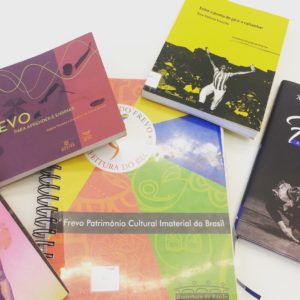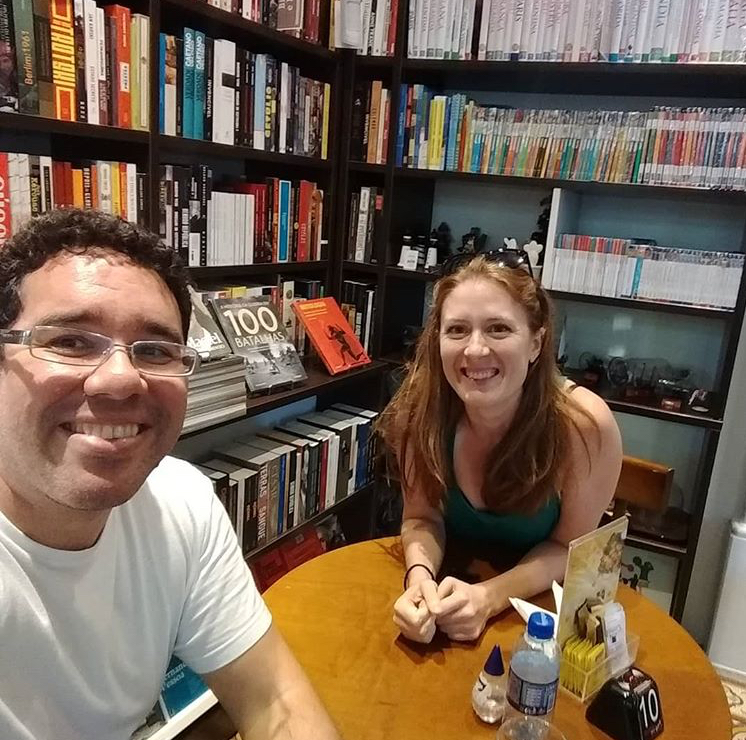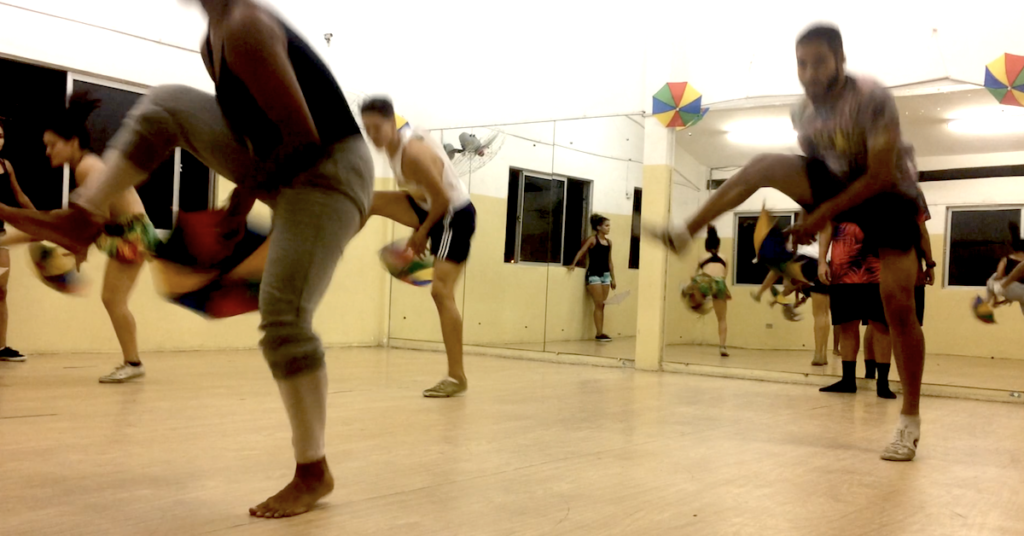It’s hard to believe that three months have already passed! It’s gone really fast and also really slow. Three more months to go, and I am feeling the pressure to get a lot done before it’s time to leave.
Since the non-stop craziness of carnival has been over for about six weeks, it’s been good to relax and get my bearings back, travel a bit (see posts about my trip to Zona Da Mata and São Paulo), catch up on reading, and have more conversations with people.
I am feeling a bit more comfortable with Portuguese, but still get frustrated with not being able to communicate fully. This has been my process so far —— Month 1: total immersion, leading to total confusion, culture shock, and frustration (in a good way). Month 2: listening more attentively, including becoming slightly addicted to cheesy novelas with subtitles (“Deus Salve O Rei” is my favorite). Month 3: forcing myself to have more conversations and relying less on Pablo as translator. I think months 4-6 should be more of all of the above, with the specific goal of speaking in more complete sentences 🙂


in Maria Goretti Rocha de Oliveira’s book, Frevo: uma apresentação coreológica
I have been collecting a lot of books and articles about frevo, carnival, and Recife, so I am slowly working my way through those. I’m trying to take the time to read now, rather than rush through with the idea that I’ll go back later (I won’t). The literature on the passo (frevo dance, as opposed to the music or carnival in general) is somewhat sparse, but it is interesting to read perspectives from various sources, such as journalists, professional dancers, dance scholars, and more. I have also started working on a new project with Professor Amilcar Bezerra from UFPE-Caruaru on the relationship between frevo music and dance, along with larger questions about what constitutes performance in the context of Recife’s carnival. We are examining how frevo music and dance together create a soundscape through various “fields of cultural production” (to use Bourdieu’s terminology) that are all interconnected and interactive. We’ll be conducting a series of interviews with dancers and musicians from these different spaces (including schools, companies, experimental artists, etc.) in order to examine the connections, confrontations, and ambiguities between them.
In addition to this research, I am continuing to explore my questions about frevo as a “dance of resistance” and it’s relationship to (i.e., roots in) capoeira. What has been most helpful for me so far has been attending classes and hearing how this narrative is communicated to students. For example, I went to Alisson Lima’s frevo and capoeira class at Instituto Brincante in São Paulo and interviewed him about his perspective on the subject (see my previous post). In addition, I have been taking Otávio Bastos’ “frevo cinquentão” at the Paço do Frevo. His concept is to teach us how to dance frevo “for ourselves,” as opposed to the more presentational and virtuosic style “for audiences” that we see on the frevo stages during carnival. Frevo cinquentão is more like the style you would see on the streets, typified by someone who is 50+ years of age (hence the name cinquentão), and incorporates what he calls “mungangas.” This is what you do when you are dancing/improvising and you draw a blank. You have a choice—you can either freeze and stop, or you can figure out a way to keep going. This latter choice of simply finding a way to keep going is “munganga.” Of course, to “mungangar” isn’t simple at all and requires a lot of familiarity with and knowledge of the steps and the form. And although the name “cinquentão” suggests that the style is for an older, perhaps less physically fit crowd, I think the name really suggests how many years of knowledge and experience it takes to build up that ability to “mugangar no passo”!
Here is Otávio’s video about frevo cinquentão, on his YouTube channel “Mexe Com Tudo”:
In class, we are encouraged to develop our own individual style and play around with dynamics. For example, Otávio has us play with an idea that hearkens back to the days when capoeiras led the frevo bands and were subject to repression—we pretend that the “police are watching,” so we make our movements small, subtle, internalized, but when they “go away,” we can go full out, fully extending our limbs and taking up as much space as possible. In both cases, I am slowly learning to feel the “jack” of frevo (to borrow a term from house dance, meaning the “groove” or that internal feeling/bounce that underlies all movement in a particular style). So far, I am feeling it the most in my shoulders, but there is also that tension between introversion and extroversion in the chest. Frevo still feels structurally very different from capoeira, but there are some similarities in the playfulness of both styles and the feeling of playing “small” versus going full out.
On Monday, I visited the Escola Municipal de Frevo in Encruzilhada for the first time. I was able to observe the Companhia de Frevo do Recife during one of their rehearsals. I was surprised by how familiar it was to me because the format of the class was very similar to jazz, contemporary, and hip hop classes that I’ve taken in the U.S. They started with a warm-up, followed by about 40 minutes of choreography that looked like a combination of frevo and jazz. That is, every end pose was a frevo shape, but all of the transitions in between were from jazz or ballet (e.g., a barrel turn, a fan kick, a battement, etc.). Then they proceeded to do some short patterns across the floor, and finally they worked on a frevo choreography called “Frevariando.” This last choreography seemed more like “straight” frevo, although I could see influences from jazz and ballet as well.
Last night I started a new beginner frevo class with Junior Viegas at the Escola Municipal. Since it is Semana Santa and people are in holiday mode, the class was more informal than usual and we started with some “brincadeiras,” which in this case were variations on the game of tag, with a frevo flair. I’m looking forward to continuing this class. I am expecting it to be quite a different experience from classes with Guerreiros do Passo (who emphasize Nascimento do Passo‘s teaching method) and with Otávio. I am looking forward to examining the difference, in terms of class format, teaching approach, and how the movement style feels in my body.
In addition to frevo classes, I will also be starting another session of cavalo marinho classes with Fabinho Soares starting next week at the Paço do Frevo. Although I am here primarily for frevo, I am really interested in learning more about this dance and performance tradition from Pernambuco’s Zona Da Mata. I’ve learned that there are fewer passos (steps) in the cavalo marinho repertory than frevo, but, when I see it, I feel that each movement carries a lot of weight and significance. Fabinho’s teaching method also suggests how nuanced the movement is, as he is very particular about adjusting the body just so, in order to make it cavalo marinho and not “outra coisa” (something else). The footwork and rhythms are familiar when I compare them to other dance styles I’ve done (e.g., Irish step, flatfooting, house dance, etc.) but there is something particular and nuanced about the posture and the tilt of the head/upper body that I want to understand. I won’t get the full context of the dance just through classes (performances are 4-8 hours long with many characters and storylines!), but I will get some sense of what it takes to do it. Unfortunately, it seems as though cavalo marinho is more active during the other half of the year (July-January, exactly when I’m not here). Maybe I’ll come back? 🙂
Here is Fabinho’s group Estrela de Ouro performing cavalo marinho a few years ago:
So I am expecting a busy schedule for next three months! My reading list is growing exponentially, but I also have to use the time while I’m here to meet with people and take the classes that I won’t be able to do after I leave. Vamos dançar!



